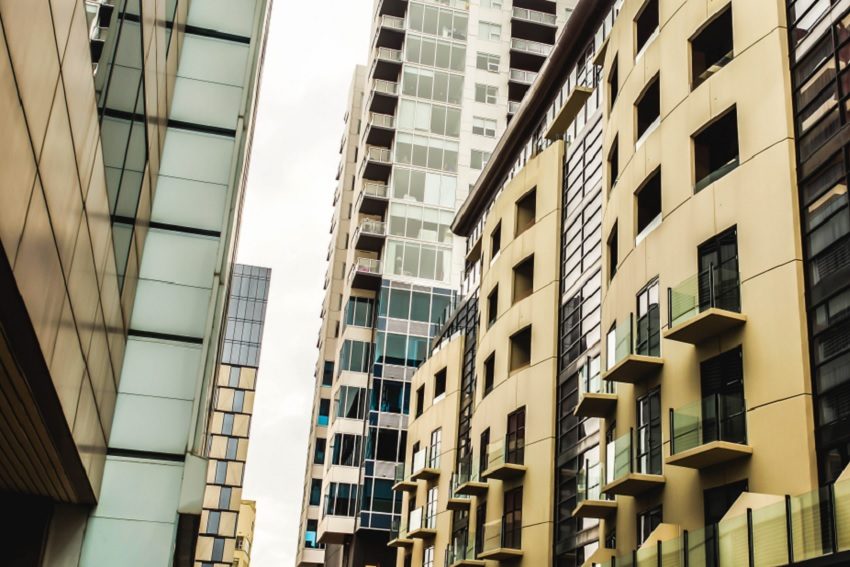Slings and Arrows: Population panic as city apartments fail to sell

The City of Adelaide wants people to buy CBD apartments, but policy contradictions left by the last state government have made the job of selling them far harder.
A bitter blend of policy contradiction between government tiers, a quietly imposed and selective new city property sales surcharge, and a whiff of panic characterised recent city council briefings about apartment renting and buying in the CBD.
If you listen to the spin, the city is a boiling cauldron of property sales growth and renters flocking in, but behind the scenes the 2015 boom is bust. Now comes the hard part, as the city bureaucrats struggle to see how they can meet their flagging strategic plan growth target to boost from 24,000 to 28,000 the number of permanent residents renting or (preferably) buying in Adelaide central by 2020. The average annual growth is 500, and declining, but the target assumes 2000 annually.
It doesn’t add up, and you don’t need a calculator to sense anxiety in Pirie Street’s corridors.
Bad news for foreign investors
For Chinese entrepreneurs building a high-rise residential tower and selling its units ‘off the plan’, or Chinese or other internationals recently signing up to buy one, the news wasn’t good.
Late last year (then) Labor state Treasurer Tom Koutsantonis (‘call me Tom’) slapped a foreign buyers’ surcharge of between four and seven per cent on apartment purchases, effective January 1, 2018. To apply at settlement date, rather than contract date, it meant that some buyers who had signed up last year but with long settlement dates got caught out, and had (and maybe still have) to fork out tens of thousands more to seal the deal. Tom must have thought it a safe time to drop the time bomb, as Adelaide’s chattering media classes prepared to take off for holidays.
In November, ABC radio reported him as saying that the surcharge “…is about ensuring that South Australians aren’t priced out of their neighbourhoods by international investors”. A bit late, Tom. Big foreign money flows have washed into Australian economies for some years, with buyers competing against locals.
In SA this followed Labor’s 2012 massive planning changes that led to a boom in residential tower construction. Labor profited from the PR sugar that sweetened CBD and frame districts property growth news stories. But six years later, the city situation is 1200 apartments under construction, with another 1800 coming soon. A council agenda confessed: “… larger projects are taking 12–18 months to achieve pre-commitment targets”. The surcharge was the last thing sales staff needed — or council’s PR hacks.
Steep climb ahead
Council now faces an even steeper incline as it pursues its growth vision.
The first response is to throw $245,000 at a strategic marketing and communications plan and a city living campaign. It also ought to go begging for fast policy change, knocking on the freshly repainted doorways of new Liberal government ministers. This could be challenging, given the warm, long-term relationships the city’s top people had with the previous mob. Given the Marshall pre-election pledges of cuts, Treasurer Lucas is in no mood to abandon even unpopular levies and surcharges.
Between 2011 (when Jay took over) and 2016 (when he was still Head Rooster), Adelaide city residential growth was driven by overseas migration (or as the council puts it “mostly Chinese students”) — about 5,700 of them. In the same year, the council hatched a ‘China ready’ project aimed at the 36,000 visitors annually from China to SA, who injected $202m into the local economy — the highest spenders in the SA visitor category. The Chinese visitor welcome plan selected city businesses and tutored them to be waiting with open arms — supported by council digital, map, signage and marketing goodies.
In light of this, Tom’s time bomb has sent all the wrong messages. As a March 20 council action plan confessed: “Approved developments are at risk of not progressing…[and] “In addition, rental vacancy rates are steadily increasing in the city reaching a high of 5.71 per cent in January 2018 for postcode 5000 (three per cent is considered to be a balanced market).” Alarm bells indeed for a Lord Mayor who wants to spread a message of residential growth — implying it’s been created during his 2014–18 council incumbency.
Policy contradiction
The council has worked overtime to welcome international visitors who are potential city renters and property investors, many of whom are Chinese. But Turbo Tom’s 2017 surcharge now sends a contradictory message. The Chinese community (which is a core city constituency for any CBD election candidate) is not happy.
Curiously, however, the council’s January action plan doesn’t seek to confront the problem. Its bid to ‘reduce entry costs to city apartment living’ seeks to maintain the full stamp duty concession (‘up to $30,000’) that’s supposed to end this year. It’s applicable to off-the-plan city apartment sales and would ‘provide a competitive advantage for the city’. But that concession doesn’t apply to ‘foreign buyers’. Council’s additional July 2017 announcement of ‘five years of free rates’ — before the surcharge arrived — resulted in only 10 positive ‘conversions’ (whatever that means) to February 2018. Expressions of interest or actual sales?
It may be tough at the top government tier, but when stuff like this happens, it’s diabolical at the bottom.
Ash Whitefly is Executive Director of the Adelaide Whitefly Institute of Diplomatic Studies.